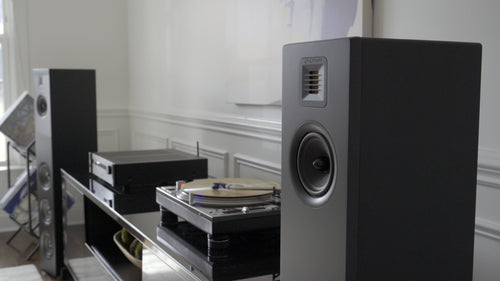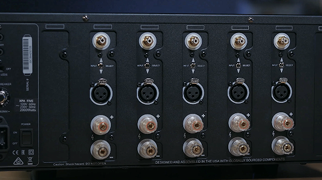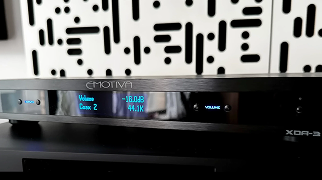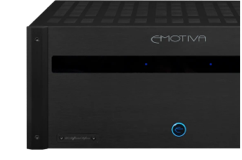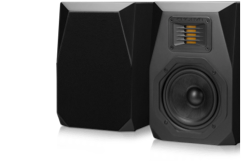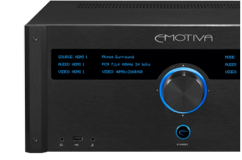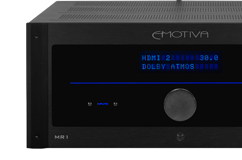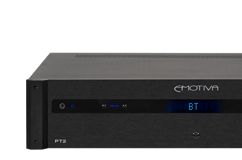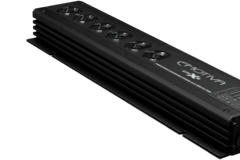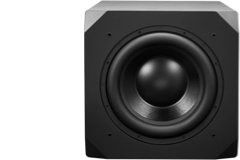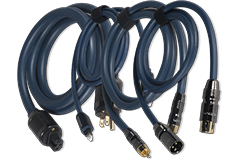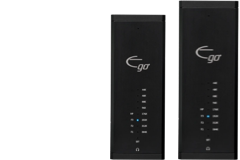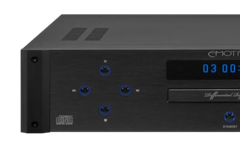
Receiver vs. Amplifier: Key Differences & What to Buy
Terminology in the Audio world is often inconsistent and disorganized, and it can be hard to tell what someone is referring to when discussing equipment. When comparing the two side-by-side, amplifiers and receivers are two very different components, but these terms are often misused!
The amplifier does the 'heavy lifting in a home audio setup and adds gain to the signal to drive a pair of speakers. Although receivers typically have an integrated amplifier, more times than not, they do not have as much power as an external power amplifier. This is one reason why Emotiva specializes in separate components! 
What is an Amplifier?
An amplifier is a device that turns the low voltage signals from your source equipment into a signal with enough voltage gain and current to power one or more passive speakers. In a home theater or stereo setup, the amplifier does the 'heavy lifting' and adds gain to the signal to drive a pair of speakers. An amplifier typically does not handle input switching, source decoding, or volume control responsibilities.
What is a Receiver?
A receiver combines an amplifier and a preamp or processor that may also include other features like an F.M. tuner, all in one box. An A.V. receiver's purpose is to take audio and video signals from various connected sources, process the signals appropriately based on the incoming format and system configuration and then provide a strong enough signal to drive loudspeakers and route the video to a television or video projector. Unlike a Power Amplifier, a receiver typically has volume control and input switching capabilities.
Do Amplifiers Sound Better From Receivers?
This question is hard to answer as what sounds better to some may not sound the best to everyone. Receivers typically have an internal amplifier; this amplifier is on the weaker side of the spectrum more often than not. This is partly because, by its nature, a receiver is responsible for performing more tasks simultaneously, so there can sometimes be less space and design allotted for amplification, as it is only part of what the receiver does. On the other hand, a dedicated external power amplifier can enable you to drive more watts to your speakers. Of course, more power means you have more dynamic headroom and the ability to have a cleaner, clearer sound than that compared to a receiver or lower-powered amplifier. While this is true in most cases, it is not an absolute fact! Before deciding whether an A.V.R. or separate component setup is best for you, I suggest matching your speakers' wattage and impedance to whatever unit you choose to pair with them!

When to use a Receiver vs. Amplifier
Which one should you use in your setup? This question depends a lot on your specific configuration and what you need. Do you have a preamp or processor and only need to provide power to your speakers, or do you need a component that can give input switching, audio decoding, volume control, and the power required to drive your speakers? If you only need to power a set of speakers, you will need a power amplifier to pair with your current pre/pro. If you need a head unit for your system, I suggest looking for either an Audio Video Receiver or a Processor.
When Should You Buy a Receiver or an Amplifier?
Referencing the paragraphs above, A.V.R. units rarely have enough power output to properly drive speakers in a home theater or even a two-channel listening setup. Even with all the features compressed in an A.V.R. or receiver, they have never been the top pick for true audiophiles. If you want truly excellent sound quality from your audio equipment, I suggest leaning towards a power amplifier. On the other hand, a receiver is better if you don't want the hassle of setting up separate components. A receiver is also for those who have limited space in their living rooms or home theaters.
Find Your Sound With Emotiva
Even if you are looking to upgrade your sound system and continue to use your existing A.V.R., we can help with our extensive range of amplifiers. If your A.V.R. has preamplifier outputs (pre-outs), it would be compatible with an external amplifier. A standard upgrade is to power the front three channels of a home theater system externally with an external amp. This creates a clean power source for the most influential speakers in your system and takes a large portion of the power load off an existing A.V.R.'s integrated amps. Alternatively, a complete amplification upgrade with a 5 or 7-channel amplifier or even more would provide more robust power and a cleaner sound to your entire system.
You can read more about power amplifiers on our website here: https://emotiva.com/collections/amps. -
Share Post


